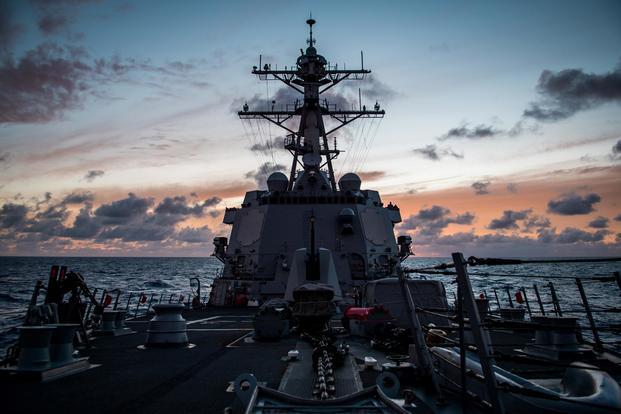The Navy is still short 6,200 sailors it needs to carry out its global mission requirements, leading top brass to stop at least two ships from participating in recent missions they weren't ready to carry out.
Adm. John Aquilino, head of U.S. Pacific Fleet, told lawmakers Tuesday that he canceled a ship's deployment to the South Pacific and sent one less vessel to participate in the 2018 Rim of the Pacific exercise due to ongoing manning shortages and training problems.
"If the ships in the Pacific Fleet are not ready to safely sail, they don't get underway," he said.
The same is true in the Atlantic, where Adm. Christopher Grady, head of Fleet Forces Command, said he has given crews more time to train up and get ready.
"We do not ask a ship or direct a ship to go on mission if they are not certified to do the job," Grady said. "... Indeed, on several occasions, I have said, 'That ship's not ready. We'll need more time.' "
Related content:
- Before the Navy's Tragic Fitzgerald Collision, the Crew Faced These Big Problems
- Navy: Failures of Leaders, Watchstanders Led to Deadly Ship Collisions
- Confusion Over Steering Put USS McCain on Deadly Collision Course
That's a change from the climate described in the investigations into a pair of 2017 ship collisions in the Pacific that killed 17 sailors. Those probes found that at least one of those ships was short staffed and hadn't completed all its predeployment certifications, yet it still steamed toward the South China Sea on a secret mission.
Aquilino and Grady were summoned to Capitol Hill to testify before a special joint session of the House Armed Services readiness and seapower subcommittees. The two were pressed to explain whether a series of personnel reforms put in place after the collisions have made the Navy safer.
The deadly accidents involving the destroyers Fitzgerald and John McCain showed that the demands on the Navy were too high for the number of ships and trained crews it has, said Rep. Rob Wittman, a Virginia Republican and the ranking member of the Seapower and Projection Forces subcommittee.
Grady said all ships now must have the personnel, equipment and training to deploy. But manning can be a challenge, he said, since the Navy is working on filling 6,200 vacant sea billets. It could take years to fill those spaces and train the sailors and officers up for the mission at hand.
In the meantime, the Navy must ensure those already on deck have the training and resources they need to perform their most basic job -- seamanship and navigation, said Rep. Elaine Luria, a newly elected Virginia Democrat representing Hampton Roads, Virginia Beach and much of Norfolk.
Luria, a retired naval surface-warfare officer who served as executive officer on the guided-missile cruiser Anzio, said Navy personnel must have the highest-level skills possible to deal with the potential of serious threats from near-peer adversaries.
That, she said, is going to require a return to training on fundamentals and a constant and ongoing assessment of how sailors and officers are performing since the collisions.
"We identify problems and we implement corrective actions," Luria said, "but we fail to sufficiently assess and follow through with these before we find ourselves back here again at yet another hearing to take more corrective actions and find ourselves with more avoidable mishaps."
-- Gina Harkins can be reached at gina.harkins@military.com. Follow her on Twitter @ginaaharkins.












